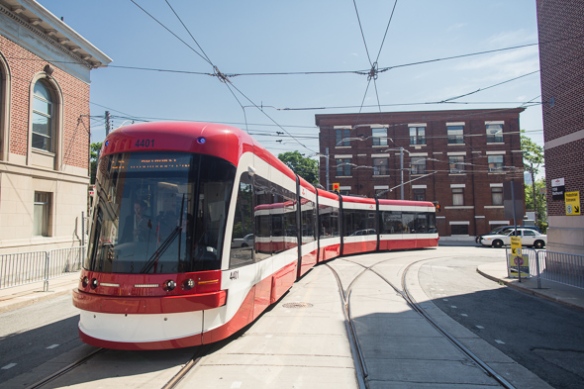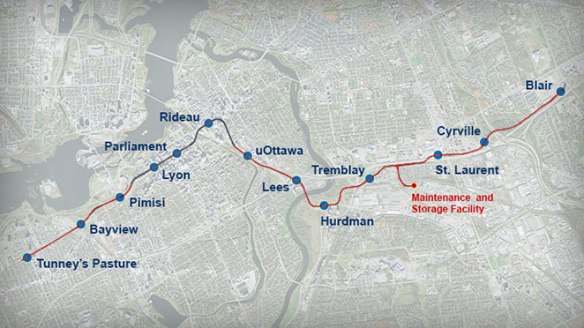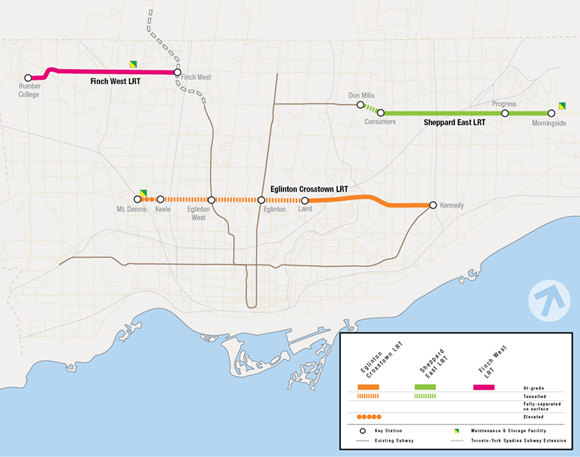As 2014 winds down, it’s worth taking a look back at the progress the global LGBT movement has made on the same-sex marriage issue this year. While 2014 didn’t see as significant growth in same-sex marriage jurisdictions as 2013 did (when France, Brazil, Uruguay, New Zealand, England and Wales, and seven US states legalized it), the movement gained huge momentum in the US, while a handful of other countries also legalized it. Here’s the new equal marriage map:
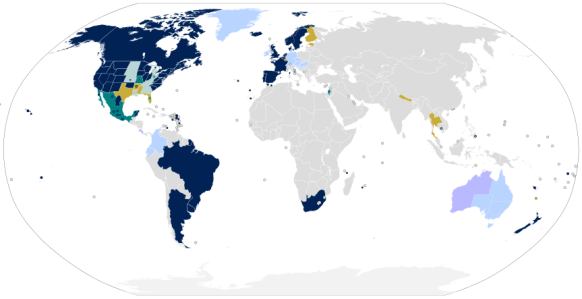
Dark Blue = Full marriage equality
Turquoise = Marriages performed elsewhere are recognized equally, but same-sex marriages are not performed
Light Blue = Civil unions or other partnerships are legal
Yellow = Equal marriage required by legislative or court action, not yet in effect (ignore Thailand, that’s a mistake)
And this is the updated population chart:
| Populations of Countries with Same-Sex Marriage | |||
| Argentina | 41,660,417 | ||
| Belgium | 11,180,320 | ||
| Brazil | 201,032,714 | ||
| Canada | 35,295,770 | ||
| Denmark | 5,623,501 | ||
| Finland (effective March 2017) | 5,448,025 | ||
| France | 66,417,590 | ||
| Iceland | 325,010 | ||
| Luxembourg (effective Jan 1, 2015) | 537,000 | ||
| Netherlands | 16,810,900 | ||
| Carribean Netherlands | 23,296 | ||
| New Zealand | 4,502,060 | ||
| Norway | 5,096,300 | ||
| Portugal | 10,562,178 | ||
| South Africa | 52,981,991 | ||
| Spain | 46,704,314 | ||
| Sweden | 9,633,490 | ||
| Uruguay | 3,286,314 | ||
| TOTAL | 517,121,190 | ||
| States that Recognize Same-Sex Marriages Performed Elsewhere | |||
| Aruba | 101,484 | ||
| Curacao | 150,563 | ||
| Israel | 8,107,000 | ||
| Mexico (marriages performed in Mexico City, Quintana Roo, Coahuila, others case-by-case) | 118,395,054 | ||
| Missouri | 6,044,171 | ||
| Sint Maarten | 37,429 | ||
| TOTAL | 132,835,701 | ||
| Subnational Jurisdictions with Same-Sex Marriage | |||
| United Kingdom | 61,389,512 | ||
| England | 53,012,456 | ||
| Wales | 3,063,456 | ||
| Scotland | 5,313,600 | ||
| United States | 222,440,047 | ||
| Massachusetts | 6,692,824 | ||
| California | 38,332,521 | ||
| Connecticut | 3,596,080 | ||
| Iowa | 3,090,416 | ||
| Vermont | 626,630 | ||
| New Hampshire | 1,323,459 | ||
| District of Columbia | 646,449 | ||
| New York | 19,651,127 | ||
| Washington | 6,971,406 | ||
| Maine | 1,328,302 | ||
| Maryland | 5,928,814 | ||
| Rhode Island | 1,051,511 | ||
| Delaware | 925,749 | ||
| Minnesota | 5,420,380 | ||
| New Jersey | 8,899,339 | ||
| Hawaii | 1,404,054 | ||
| Illinois | 12,882,135 | ||
| New Mexico | 2,085,287 | ||
| Oregon | 3,930,065 | ||
| Pennsylvania | 12,773,801 | ||
| Utah | 2,900,872 | ||
| Oklahoma | 3,850,568 | ||
| Virginia | 8,260,405 | ||
| Wisconsin | 5,742,713 | ||
| Indiana | 6,570,902 | ||
| Colorado | 5,268,367 | ||
| Nevada | 2,790,136 | ||
| Idaho | 1,612,136 | ||
| West Virginia | 1,854,304 | ||
| North Carolina | 9,848,060 | ||
| Alaska | 735,132 | ||
| Arizona | 6,626,624 | ||
| Wyoming | 582,658 | ||
| Kansas | 2,893,957 | ||
| South Carolina | 4,774,839 | ||
| Montana | 1,015,165 | ||
| Florida | 19,552,860 | ||
| EDIT Feb 2015: Alabama | 4,849,377 | ||
| TOTAL | 288,678,936 | ||
| GRAND TOTAL | 933,786,450 | ||
| Countries Most Likely to Legalize Same-Sex Marriage in 2015-16 | |||
| Australia | 23,702,300 | ||
| Austria | 8,504,850 | ||
| Colombia | 47,072,915 | ||
| Chile | 16,634,603 | ||
| Guernsey | 65,345 | ||
| Greenland | 56,968 | ||
| Ireland (referendum May 2015) | 4,593,100 | ||
| Italy | 60,782,668 | ||
| Jersey | 97,857 | ||
| Northern Ireland | 1,841,245 | ||
| UPDATE Feb 15: Slovenia | 2,061,085 | ||
| Switzerland | 8,183,800 | ||
| Taiwan | 23,373,517 | ||
| Rest of United States | 90,010,576 | ||
| TOTAL | 254,773,679 | ||
The big news, of course, was in the US, where court actions finally brought same-sex marriage to 17 states (Oregon, Pennsylvania, Wisconsin, Indiana, Oklahoma, Virginia, Colorado, West Virginia, Nevada, North Carolina, Alaska, Idaho, Arizona, Wyoming, Kansas, Montana, and South Carolina), bringing the total to 35 states. Missouri was forced to recognize out-of-state same-sex marriages, and also to issue same-sex marriage licences in St. Louis only (so far). And a stay on a ruling legalizing same-sex marriage in Florida expires on January 5, 2015. When that happens, the US will become the country with the largest population living in equal marriage jurisdictions. 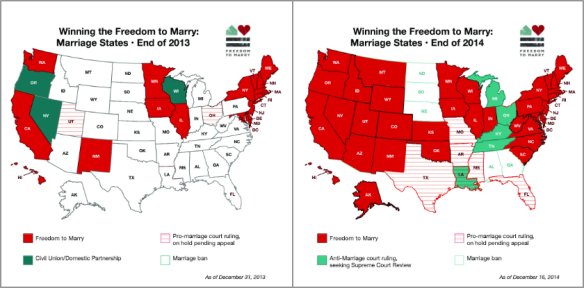 This is all gearing up for an expected showdown at the US Supreme Court in 2015, which will have to rule on same-sex marriage due to a circuit split on the issue caused by the sixth circuit upholding bans on same-sex marriage in Ohio, Kentucky, Tennessee, and Michigan. Given the Supreme Court’s reluctance to accept challenges to pro-equality rulings, expect the Court to rule in favour of equal marriage. Such a ruling would not only impact the remaining 14 states that do not have equal marriage, but also US territories in the Pacific and Caribbean: Puerto Rico, US Virgin Islands, Guam, American Samoa, and Northern Mariana Islands.
This is all gearing up for an expected showdown at the US Supreme Court in 2015, which will have to rule on same-sex marriage due to a circuit split on the issue caused by the sixth circuit upholding bans on same-sex marriage in Ohio, Kentucky, Tennessee, and Michigan. Given the Supreme Court’s reluctance to accept challenges to pro-equality rulings, expect the Court to rule in favour of equal marriage. Such a ruling would not only impact the remaining 14 states that do not have equal marriage, but also US territories in the Pacific and Caribbean: Puerto Rico, US Virgin Islands, Guam, American Samoa, and Northern Mariana Islands.
The only full countries to pass marriage equality this year were Luxembourg and Finland. Luxembourg’s law takes effect Jan 1, 2015, while Finland’s is expected to take effect in March 2017, after the government revises several statutes relating to marriage. Scotland also passed equal marriage this year, while England and Wales’ equal marriage law took effect this year after being passed in 2013. That leaves Northern Ireland as the only part of the UK where equal marriage is not in effect. As the Republic of Ireland is set to hold a referendum on equal marriage in May 2015, which is expected to pass by a wide margin, this will leave Northern Ireland in a rather awkward spot on the issue. Whether or not the forces in government opposing equal marriage reconsider in the wake of a successful referendum in the Republic, a legal challenge may go forward to force the issue.
The Crown Dependencies of Jersey and Guernsey also announced plans to legalize gay marriage in their territories in 2015, although Guernsey’s draft law calls these marriages ‘civil unions.’ The Isle of Mann has not announced plans to upgrade their civil unions to marriages. The UK marriage law also does not apply to UK overseas territories, home to about 350,000 people in the Caribbean, Atlantic, and Mediterranean. Former foreign minister Ed Milliband had previously mused that Britain’s non-discrimination laws could be forced on these territories by an order-in-council (similar to the order that nullified their anti-sodomy laws in 2000). It’s possible, but unlikely that the UK could use this method to pass equal marriage in these territories, or require them to simply recognize other British same-sex marriages. (For another precedent, Netherlands imposed its equal marriage law on its Caribbean territories, while France’s law has always applied to its overseas territories, which are integral parts of the Republic.)
The Mexican state of Coahuila passed an equal marriage law this year. All Mexican states are already required to recognize marriages from each other’s states, and the federal government recognizes them as well. In the meantime, gay and lesbian Mexicans have been using the courts to gain access to marriage in several other states with great success. However, while the courts have generally been allowing same-sex marriages to go forward, Mexican law does not typically rely on court precedents to shape law as happens in common law countries – it seems judges must rule the same way five times before a law is struck down as unconstitutional. Courts in several Mexican states are well on the way to achieving this. Meanwhile, some Mexican state governments, recognizing the absurdity of the situation, have begun the legislative process to allow equal marriage. Expect more progress on Mexican equal marriage in 2015 both legislatively and through the courts.
Several states that I had predicted last year would enact equal marriage this year failed to do so. The Faroe Islands and Andorra both rejected same-sex marriage bills in their Parliaments, although Andorra then passed a civil union law which is awaiting promulgation [EDIT: It appears that the law was actually promulgated on Christmas Eve, 2014, and came into effect Christmas Day]. Vietnam rejected same-sex marriage in its review of its family law [EDIT: but at the same time, the new law removed a statutory ban and fine on same-sex marriages; they’re no longer illegal, but still unrecognized]. The issue seems to have simply fallen off the radar in Nepal and Costa Rica, while the situation remains unclear in Colombia.
Greenland had also announced plans to allow same-sex marriage, but has had a change of Prime Minister and governing coalition. Google turns up nothing on whether the new government plans to go ahead with equal marriage. [EDIT: Greenland’s new government is composed of the same previous leading party in a coalition with two smaller centre-right parties. It is unclear if equal marriage is on the new government’s agenda.]
Chile elected a president who supports equal marriage. While her party also controls Congress, it appears divided on whether to move ahead with marriage or civil unions. The Congress is expected to debate the issue in January, and may enact civil unions first, then pass equal marriage a few years later. [EDIT: Congress passed a gender-neutral civil unions law in January. A Marriage bill is still before Congress.]
A number of other countries now have mainstream parties calling for equal marriage. Switzerland and Austria both have bills before their parliaments to allow same-sex marriage, but I’d still call these long shots. Germany has a theoretical majority of politicians in its parliament supporting equal marriage, including half the governing coalition. Unfortunately, the other half (Christian Democrats/Christian Socialists) are strongly opposed and blocking consideration of same-sex marriage.
Italy has a number of parties supporting equal marriage, including a number of local governments that are defying federal law by registering same-sex marriages. The Italian Senate is set to debate either equal marriage or civil union legislation (the latter favoured by the current PM) in January. Either would be a major advance in Italy, the last country in Western Europe without any legal recognition for same-sex couples.
[EDIT Feb. 15: A surprise advance came in Slovenia, where the opposition submitted an equal marriage bill in February, which quickly gained the support of the government. The gender-neutral marriage law has already passed the committee stage, and is expected to be passed by Parliament in March. Slovenia will be the first Slavic, Eastern European, and/or post-Communist country to pass an equal marriage law. It will bring to the EU to 11/28 members with equal marriage laws in effect or pending.
Also in a surprising move, same-sex marriage has emerged as an issue in the March 17 Israeli election. Several parties have endorsed same-sex, interfaith, and civil marriages (all marriages performed in Israel are religious, although Israel recognizes all marriages performed overseas, including same-sex marriages). Even members of the current governing Likud party have endorsed same-sex marriage on the campaign trail. Israeli politics are notoriously volatile and coalition-based, so it’s not clear that the marriage proposals will go forward even if a majority of MKs support it after the election. It goes without saying, if it does go through, Israel would be the first country in the region to allow same-sex marriages, and possibly the first in Asia.]
The situation in Australia is volatile. After a court ruling struck down the Capital Territory’s equal marriage law, marriage is the sole purview of the federal government, which is headed by a PM (and coalition of parties) strongly opposed to it. This is despite polling that shows massive support for equal marriage nationwide. A Senator has introduced an equal marriage bill, hoping that a free vote will allow it to pass, but unless there’s a massive popular movement for it, the numbers are not currently on the side of equal marriage in the Parliament.
A significant setback may come in Slovakia, where a referendum is scheduled for February to pass a constitutional ban on same-sex marriage, gay adoption, and sex education. Slovakia already bans same-sex marriage, but the referendum appears to have been triggered by a petition drive led by the US anti-gay organization Alliance Defending Freedom. Nevertheless, public opinion appears to be on its side. [EDIT: The referendum failed due to lack of quorum, although more than 90 percent voted in favour.]
On the civil unions front, Malta passed a sweeping all-but-the-word-marriage civil unions bill in April, which is already in effect. Croatia passed a “life partnership” bill that equates partnerships with marriage on all issues but adoption. Estonia passed civil unions — a first for a post-Soviet country — but this won’t take effect until 2016. Gibraltar also passed a civil unions bill. In 2015, proposals for civil union legislation will be debated in Bolivia, Peru, Venezuela, Costa Rica, Greece, and Cyprus. [EDIT: Greece’s new governing party, once in favour of same-sex marriage, announced plans for civil unions in February. Latvia also announced plans for civil unions in January.]
Thailand had previously been close to passing a same-sex marriage law, but due to the political crisis in the country, progress stalled. The military junta running the country is said to be considering a civil partnership bill in 2015, which would be a first for Asia. Taiwan is continuing to debate a same-sex marriage bill sponsored by the opposition, although I don’t think I would bet on its passing.
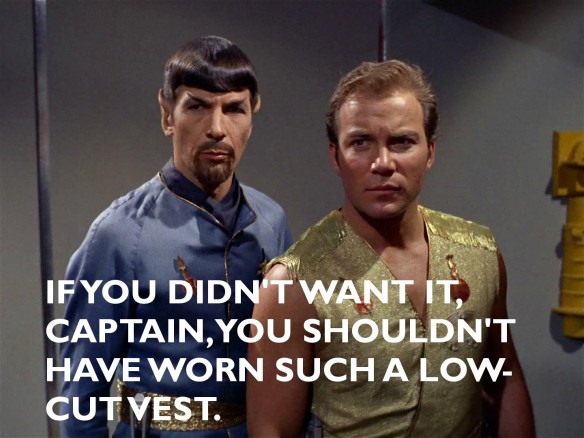



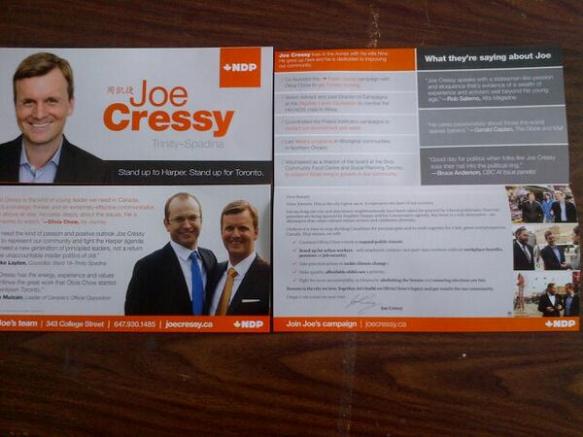
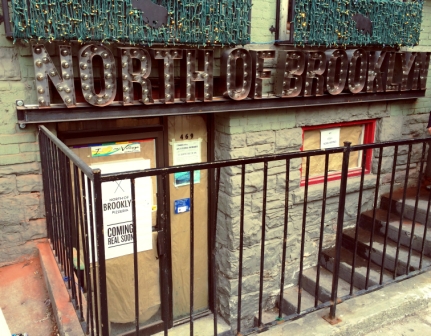
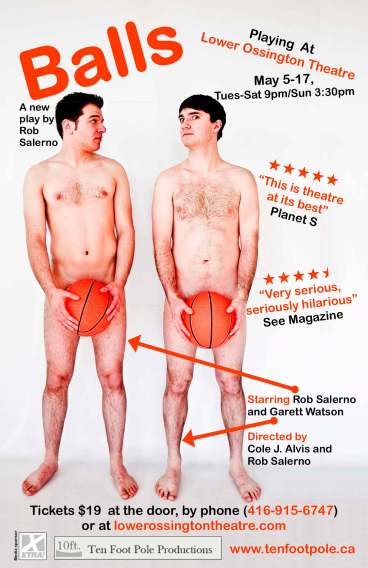
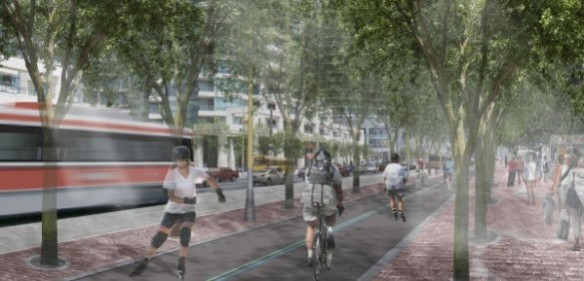
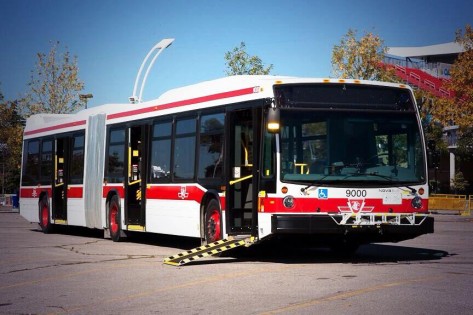 – GO Station modernization at Burlington and Exhibition. GO Bloor will also become fully accessible ahead of the launch of the UPE. New parking structures at Ajax, Clarkson, and Pickering. GO modernization includes accessibilty improvements and additional entrances. New parking structures will accommodate additional riders.
– GO Station modernization at Burlington and Exhibition. GO Bloor will also become fully accessible ahead of the launch of the UPE. New parking structures at Ajax, Clarkson, and Pickering. GO modernization includes accessibilty improvements and additional entrances. New parking structures will accommodate additional riders.
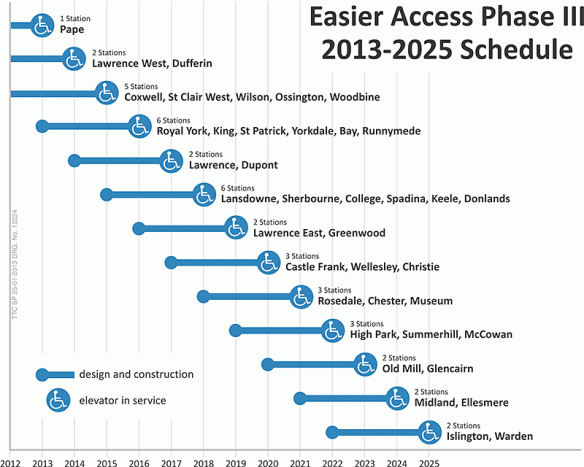
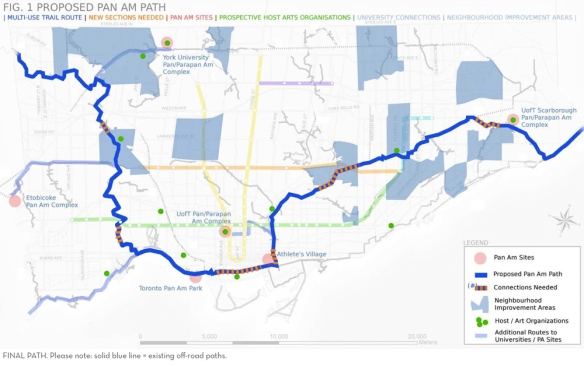
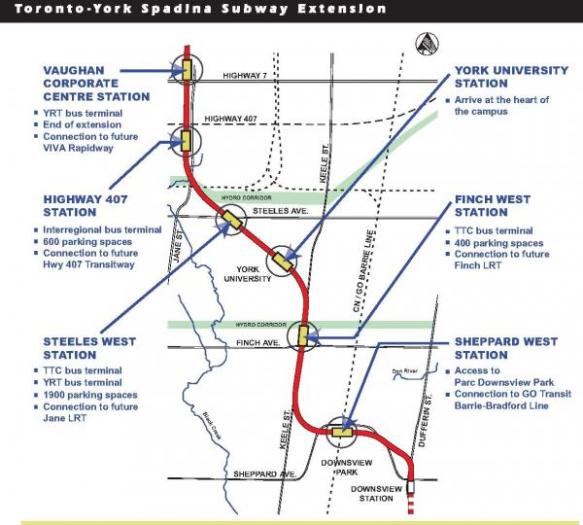
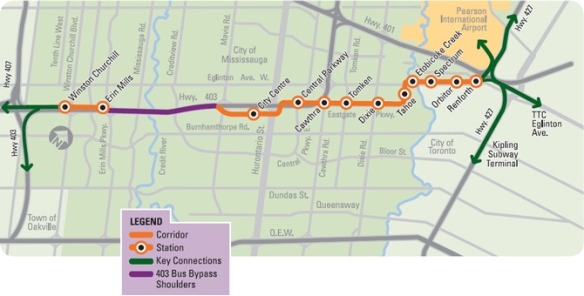 – Accessibility/modernization improvements to
– Accessibility/modernization improvements to  2017
2017